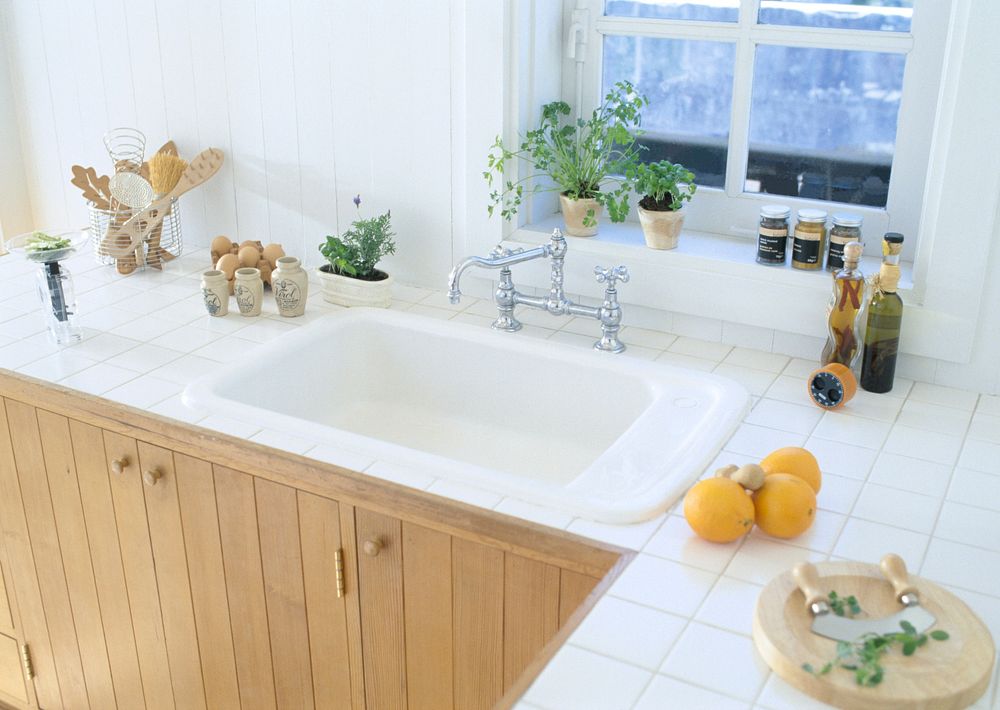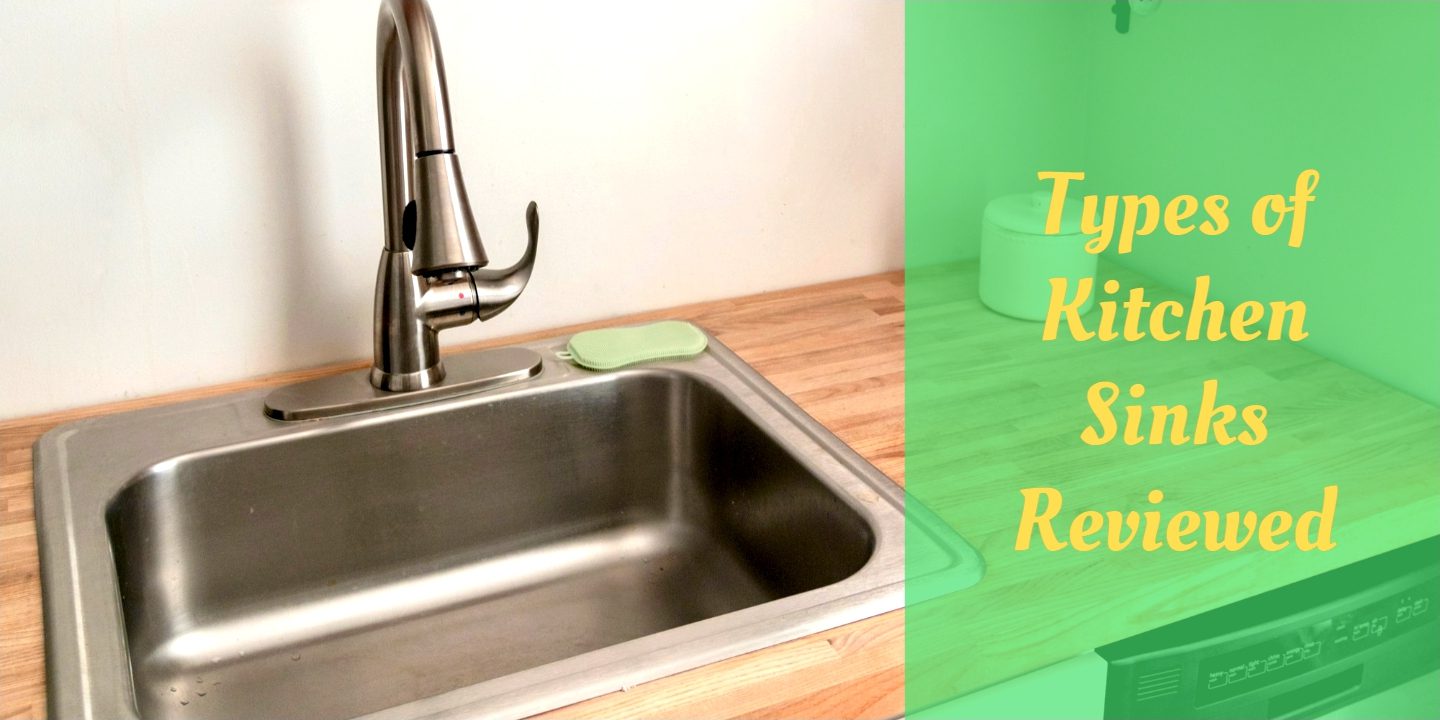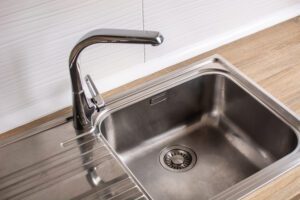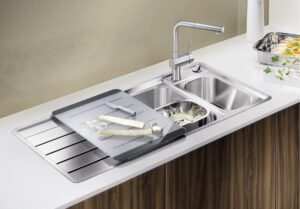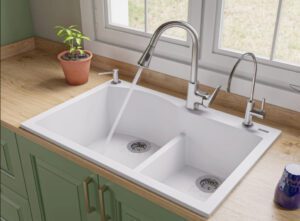The heart of your kitchen deserves a masterpiece, not just a basin. Yet, choosing the right sink can feel like navigating a labyrinth of materials, styles, and functionalities.
That’s why we’re going to review the 11 types of kitchen sinks for you. We’ll help you find the best kitchen sink regardless of your needs.
From the classic stainless steel to the space-saving corner sink, we’ll break down the pros, cons, and technical details of each contender. Let’s get into it!
Top-Mount Sink
This one is the quintessential kitchen workhorse. It’s reigned supreme for decades, gracing countless kitchens with its familiar, straightforward design.
Pros:
- DIY Delight: Installing this one is rather simple. It’s a gem for those who like to tackle projects themselves.
- Wallet-Friendly: These are generally much lighter on the wallet than their under-mount counterparts. This is because they require less material and specialized installation.
- Material: These sinks come in a dizzying array of materials. No matter your aesthetic, there’s a top-mount sink out there to match it perfectly.
- Countertop Compatibility: These play nice with nearly any surface. It’s ideal for renovations, as you don’t have to worry about replacing your countertops just to get the sink you love.
Cons:
- The Rim Factor: Crumbs and grime love to gather in that little nook between the rim and the counter, requiring regular attention to keep your sink sparkling.
- Aesthetics Ain’t Perfect: These aren’t exactly the epitome of sleek, modern minimalism. Their rims can create a slightly dated look.
- Shallow Dive: These sinks tend to be shallower than other options. This might not be ideal for heavy-duty dishwashing or soaking large pots and pans.

You may also like: 5 Best Luxury Kitchen Faucets Reviews
Undermount Sink
This sink is a double-edged sword – a sleek and sophisticated upgrade that demands extra cleaning and a heftier investment. If aesthetics and convenience are your top priorities, and your budget and counter space allows, the under-mount sink can be a transformative addition.
Pros:
- Cleaning Nirvana: These offer a smooth transition, letting you sweep or wipe debris directly into the sink with an effortless glide. Surface cleanup becomes a blissful experience.
- A Design Dream: Such sinks boast a sleek, minimalist aesthetic that instantly elevates your kitchen. They create a seamless, high-end look that’s undeniably modern and chic.
- Quality Counts: These usually embrace thicker, higher-quality materials. This translates to a more durable and luxurious feel compared to their counterparts.
Cons:
- The Crevice Conundrum: Food scraps and moisture can lurk in the crevice, potentially breeding mold and mildew if neglected. Extra vigilance is required to maintain sparkling underbellies.
- Pricey: These sinks and their specialized installation process demand a deeper dive into your wallet compared to traditional top-mount options.
- Space Squeeze: Undermounts crave additional clearance beneath the counter for proper installation and access to mounting clips. This can be a deal-breaker in kitchens where every inch counts.
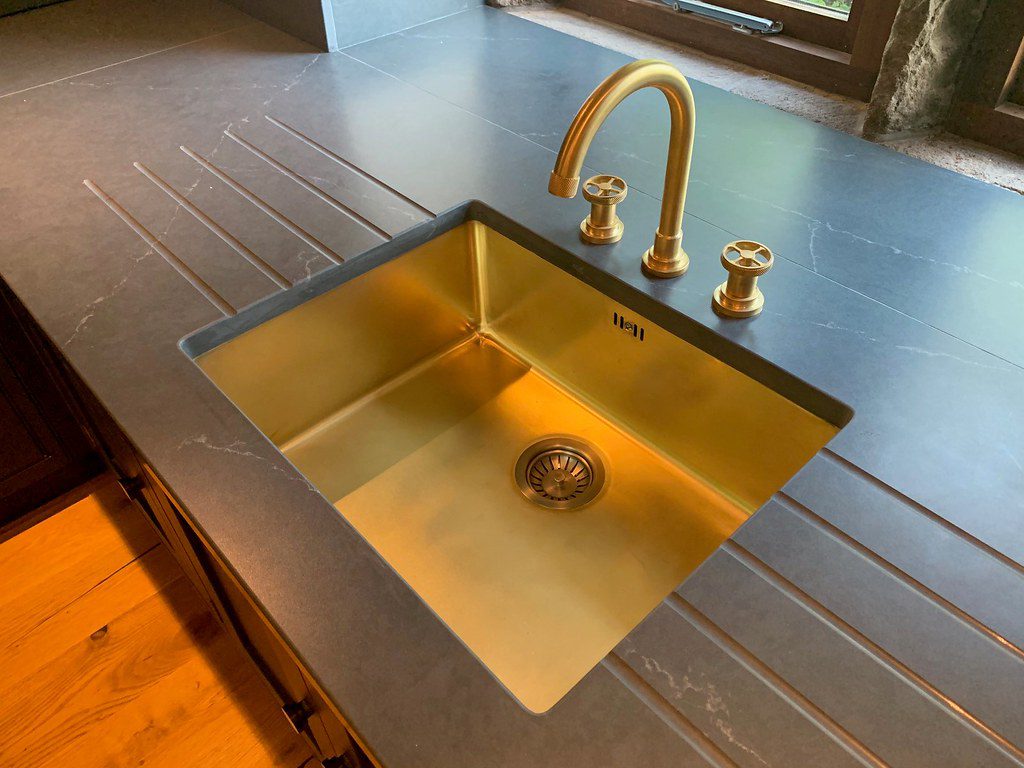
Single Basin Sink
Craving the freedom to wash oversized pots and pans without bumping into dividers? Enter the single basin sink, a spacious stage for culinary creations and clean-up dramas.
Pros:
- Uninterrupted spaciousness: Ideal for washing large pots, trays, and bulky items. Think roasting pans, Dutch ovens, and oversized cutting boards. No more contortions or Tetris-like fitting!
- Enhanced workflow for serious cooks: Soaking ingredients, prepping vegetables, and pre-rinsing dishes become seamless on this expansive canvas. It’s a playground for passionate home chefs who prefer a fluid cooking experience.
- Improved countertop accessibility: No divider means easier access to the entire countertop surface, particularly helpful for tasks like kneading dough or rolling out pastries.
Cons:
- Limited drying area: Dedicated drying space becomes crucial, as the main basin is occupied with washing or soaking. Invest in a dish rack or utilize strategic countertop placement.
- Less compartmentalization: Some users might miss the convenience of separate basins for rinsing, draining, or defrosting. It requires adapting workflow to the single-bowl setup.
- Not ideal for all kitchen sizes: Smaller kitchens might find the lack of compartmentalization challenging, leading to a cluttered feel. Consider your available space and desired functionality.
- Potential for splashes and mess: With one large basin, water spray can be more readily dispersed. Strategically placed draining boards or splash guards might be necessary.
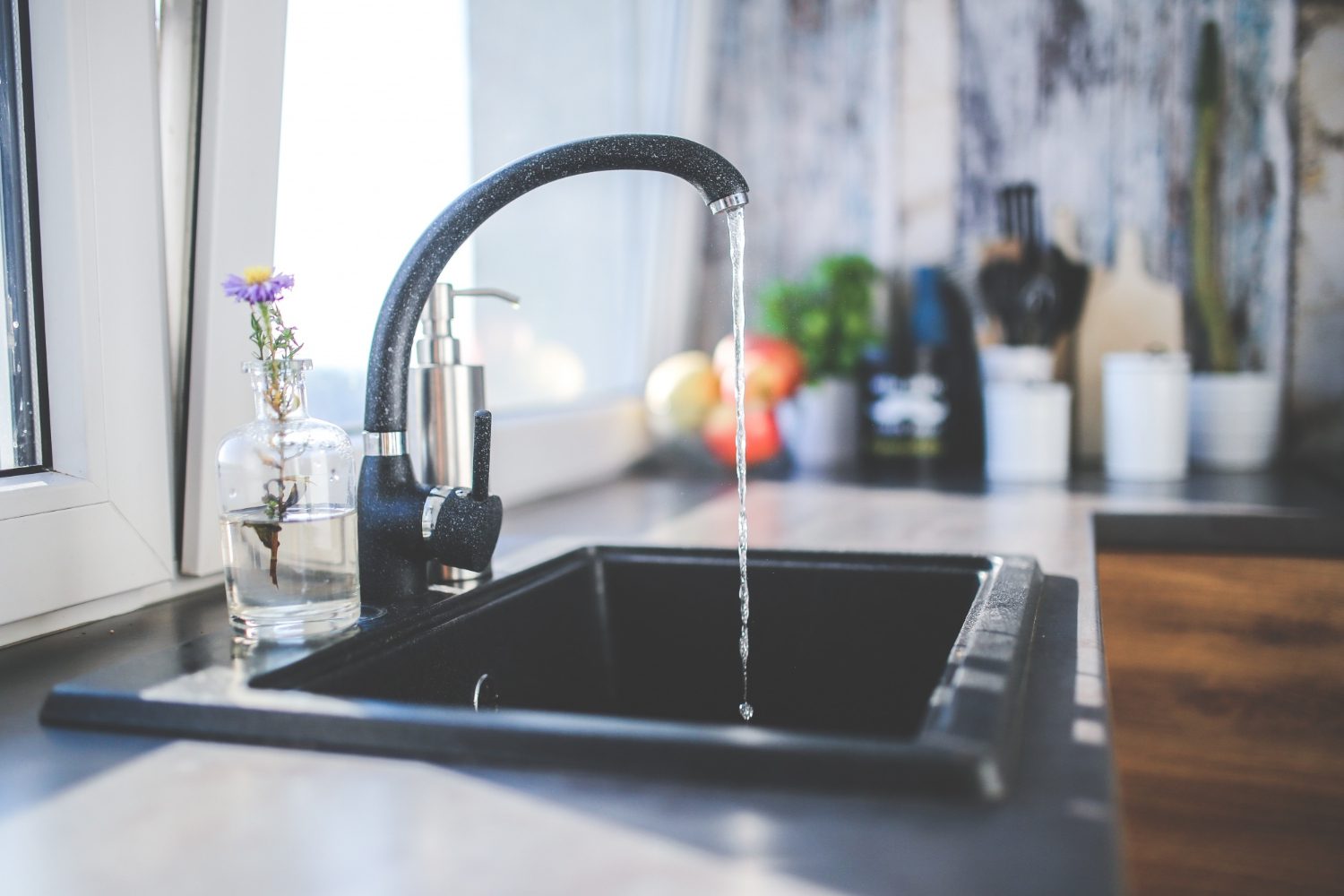
Double Basin Sink
This sink type remains a timeless workhorse in the realm of kitchen functionality and for a good reason. It’s versatile, and functional, and can be a great choice for both large and small families. Just be sure to consider your needs and space limitations before you make your purchase.
- Multitasking Efficiency: Simultaneous washing and rinsing, soaking and prepping, or drying and draining. No more juggling tasks in a single bowl!
- Dishwashing Nirvana: Ideal for homes without dishwashers, offering dedicated spaces for sudsy action and clean rinsing.
- Mess Management Master: Accommodates overflowing dirty dishes, allows soaking for tough stains, and keeps cleanup organized.
- Reduced Cleaning: Fewer compartments mean less cleaning and maintenance compared to multi-basin setups.
Cons:
- Size Limitations: Smaller individual basins might not fit oversized pots and pans. Measure your cookware beforehand!
- Not Trend-Setting: This doesn’t boast the trendy farmhouse charm or sleek minimalism of other sink styles.
- Space Considerations: Requires enough counter space to avoid feeling cramped, especially in smaller kitchens.
- Limited Separation: Some users might miss the complete compartmentalization offered by single basins for specific tasks.
- Cost: These can also be more expensive than single-basin sinks.
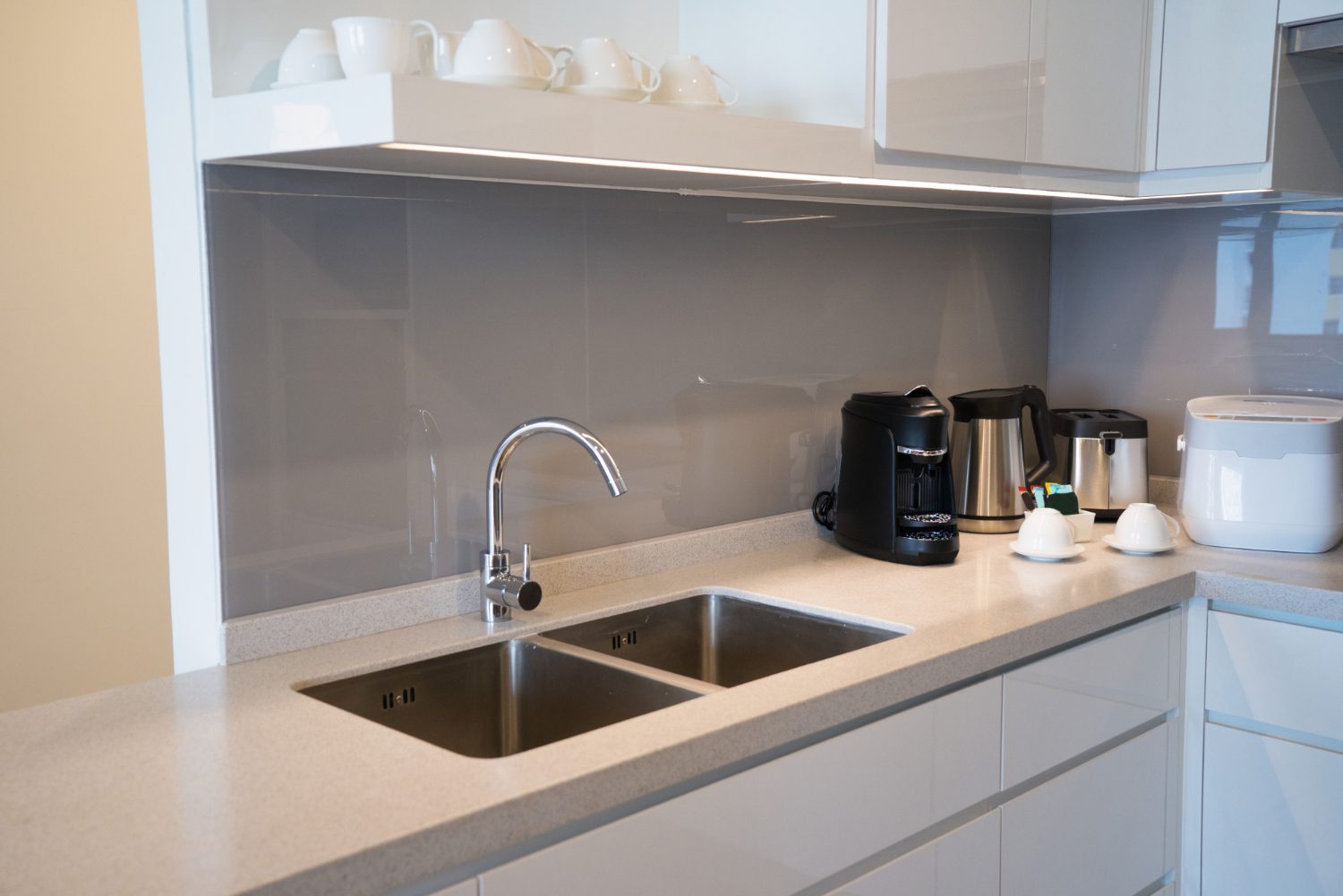
Farmhouse Sink
The farmhouse sink, or apron sink, isn’t just a basin for washing dishes; it’s a statement piece that transforms your kitchen into a rustic haven. Its spacious embrace caters to passionate chefs and large family gatherings, while its timeless charm elevates any kitchen.
Pros:
- Spacious Haven: Ideal for washing oversized cookware, roasting trays, and bulky items. No more contortions or struggling to fit large pots!
- Cleaning Champion: Smooth, non-porous surface repels stains and bacteria, making maintenance a breeze. Wiping away spills and suds is all it takes for a radiant basin.
- Trendy Statement Piece: Vintage charm and effortless style elevate any kitchen aesthetic. Choose from rustic farmhouse vibes to sleek modern finishes to perfectly complement your vision.
- Accommodates Large Gatherings: Deep and wide basin easily handles the post-feast dishwashing for families and entertaining, preventing overflowing chaos.
Cons:
- Pricey: Fireclay and cast iron models come with a hefty price tag. Weigh the cost against your budget and long-term kitchen aspirations.
- Installation Challenges: Heavier materials like cast iron require substantial muscle and often professional expertise for proper installation.
- Countertop Space Demands: The apron front necessitates ample countertop space. Carefully measure your layout to avoid a cramped feel and potential countertop clashes.
- Limited Flexibility: The fixed basin position might not suit some workflows that require more compartmentalization for specific tasks like soaking or defrosting.

Corner Sink
While most kitchen sinks neatly conform to rectangular expectations, the corner sink dares to be different. Nestled in the often-ignored nook, this space-saving wonder maximizes utility in compact kitchens.
Pros:
- Small Space Superhero: It’s a functional wash zone without encroaching on precious surface area. Think of it as unlocking hidden potential, especially for galley kitchens or cramped layouts.
- Double the Utility, Half the Footprint: These often boast two basins, offering the versatility of double basins in a fraction of the space. Wash dishes in one, prep ingredients in the other, and conquer the post-meal chaos without feeling like you’re juggling in a phone booth.
- A Design Statement: Such sinks can add a touch of personality and intrigue to your kitchen. You can make it work regardless of your style.
- Potential Cost Efficiency: Depending on the material and style, corner sinks can be a budget-friendly option compared to larger, more conventional sink layouts.
Cons:
- Customization Conundrum: Generally, these require customized cabinets and countertops. Be prepared for additional carpentry costs and potential installation challenges.
- Fragility Factor: The unique L-shaped design can be more susceptible to chips and cracks compared to its sturdier, rectangular counterparts. Consider the material carefully, opting for durable options like stainless steel or quartz if longevity is a concern.
- Installation Intricacies: These usually require professional installation expertise. Factor in the additional cost and ensure you find a qualified contractor familiar with this unique layout.
- Workflow Adaptability: The setup might not suit all cooking styles.
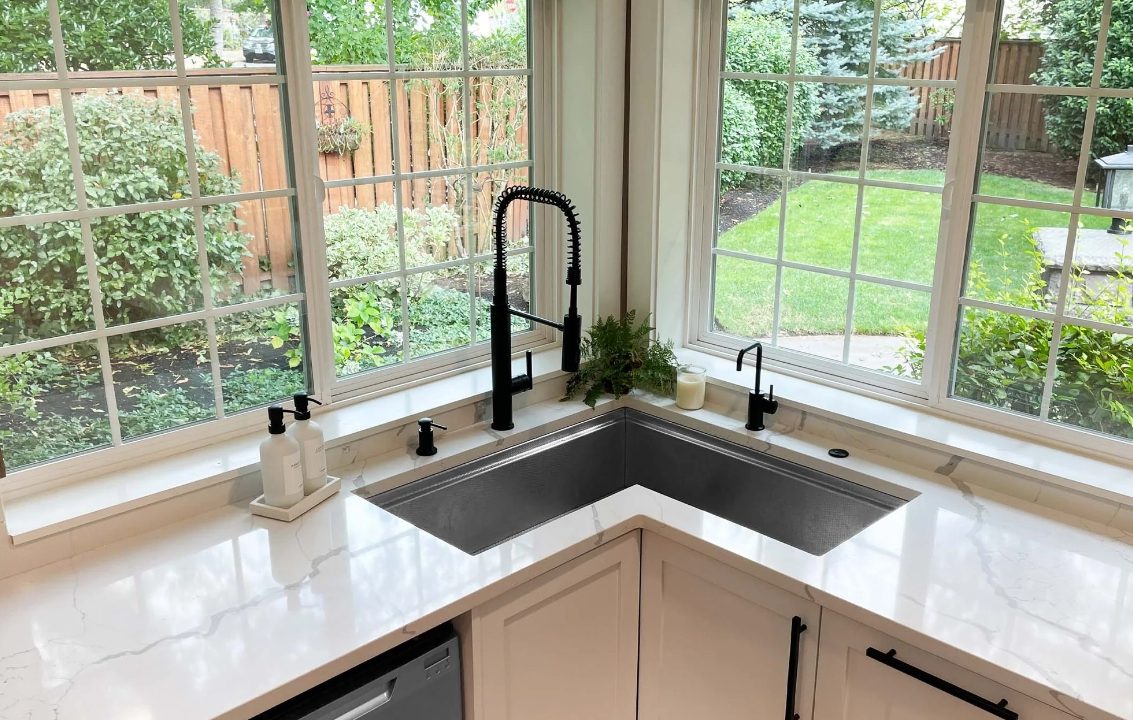
Check also: 11 Tips To Save Space On Your Kitchen
Integrated Sink
This type is an upgrade that elevates your culinary haven to new heights. Unlike traditional sinks that sit atop countertops, these are crafted from the same material as the countertop itself. Thus, the sink seems to organically emerge from the countertop itself.
Pros:
- Luxury Defined: It instantly elevates your kitchen to a higher echelon of style and sophistication.
- Cleaning Nirvana: The integrated design eliminates those hard-to-reach crevices, making cleaning a breeze. Simply sweep crumbs and spills directly into the sink, and your countertop will be sparkling clean in no time.
- Hygienic Haven: The seamless integration minimizes the risk of food particles and bacteria accumulating in hidden corners. This not only enhances the overall hygiene of your kitchen but also provides peace of mind for health-conscious cooks.
Cons:
- Pricey: Such sinks, especially those made from natural stones, come with a hefty price tag.
- Installation Intricacies: Unlike standard sinks that simply drop into place, these require meticulous planning and expert installation. The countertop and sink are essentially one piece, demanding precise measurements and skilled craftsmanship to ensure a flawless fit.
- Repair Issue: Unlike traditional sinks that can be easily replaced, repairing this one can be a complex and costly endeavor. Consider the potential repair costs and factor them into your decision-making process.

Sink With Integrated Workstation
This type is a game-changer for space-conscious kitchens and culinary enthusiasts alike. Picture a removable cutting board nestled alongside a colander and strainer, all within easy reach of your sink. This ingenious design streamlines your workflow, eliminating the need for multiple bowls and cluttered countertops.
Pros:
- Space Savvy Hero: The integrated workstation maximizes efficiency by utilizing the sink area for food prep tasks. No more sacrificing precious countertop real estate for chopping vegetables or rinsing ingredients.
- Multitasking: Forget juggling bowls and colanders. The modular accessories transform your sink into a multi-functional station. It minimizes mess and maximizes convenience.
- Cleaning Champion: The design minimizes those hard-to-reach crevices between the sink and separate colanders or bowls.
Cons:
- Investment: Be prepared to invest in this culinary upgrade. While offering exceptional functionality, sinks with integrated workstations often come with a higher price tag compared to traditional models.
- Customization: Not all workstation sinks are created equal. The type and number of included accessories can vary. Carefully assess your needs and pick a model with the functionalities that best suit your cooking style.
- Installation Intricacies: Depending on the sink design and chosen accessories, installation might require professional expertise.
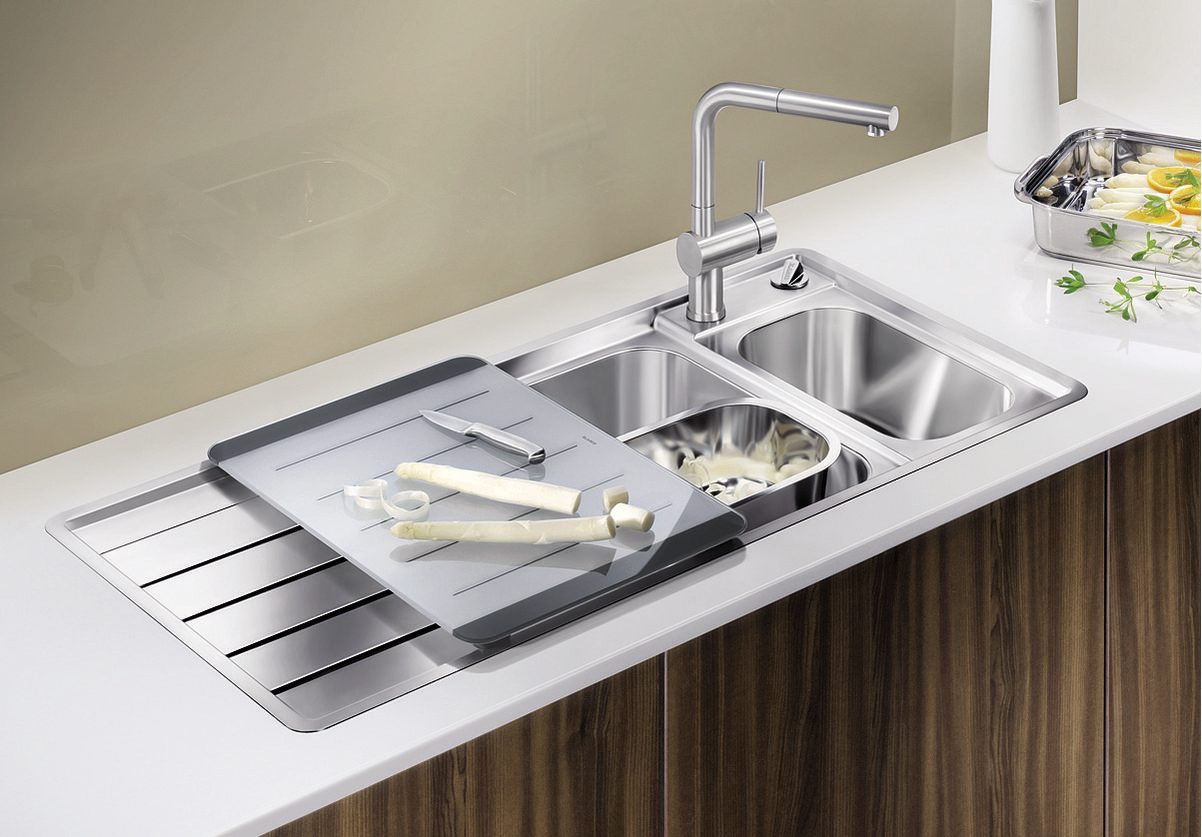
Low Divider Double Basin Sink
This type comes with the convenience of two compartments without sacrificing aesthetics. You can soak dishes in one compartment while prepping ingredients in the other. Now, envision a design that eliminates the bulky divider, creating a more streamlined and visually appealing aesthetic.
Pros:
- Aesthetic: It creates a sleeker, more modern look, seamlessly integrating into contemporary kitchens. This design elevates your kitchen’s style without compromising functionality.
- Water Flow Freedom: This type allows water to flow freely between the basins. This is particularly beneficial when washing large pots and pans that might not fit comfortably within a single compartment.
- Multitasking Maestro: The setup empowers you to multitask like a pro. Soak dishes in one basin while prepping vegetables in the other, or utilize one side for rinsing and the other for draining, maximizing your efficiency in the kitchen.
Cons:
- Finding Your Match: While gaining popularity, these are not as readily available as their traditional counterparts. This might require wider searches and potentially higher price tags due to their niche appeal.
- Large Cookware: While the low divider allows for some overflow, it doesn’t completely disappear. Extra-large cookware like roasting trays or broilers might still struggle to fit comfortably within the basin.
- Depth Perception: The lower divider often translates to shallower basins compared to traditional double basin sinks. This might limit your ability to fill either side with deep water for soaking or cleaning bulky items.
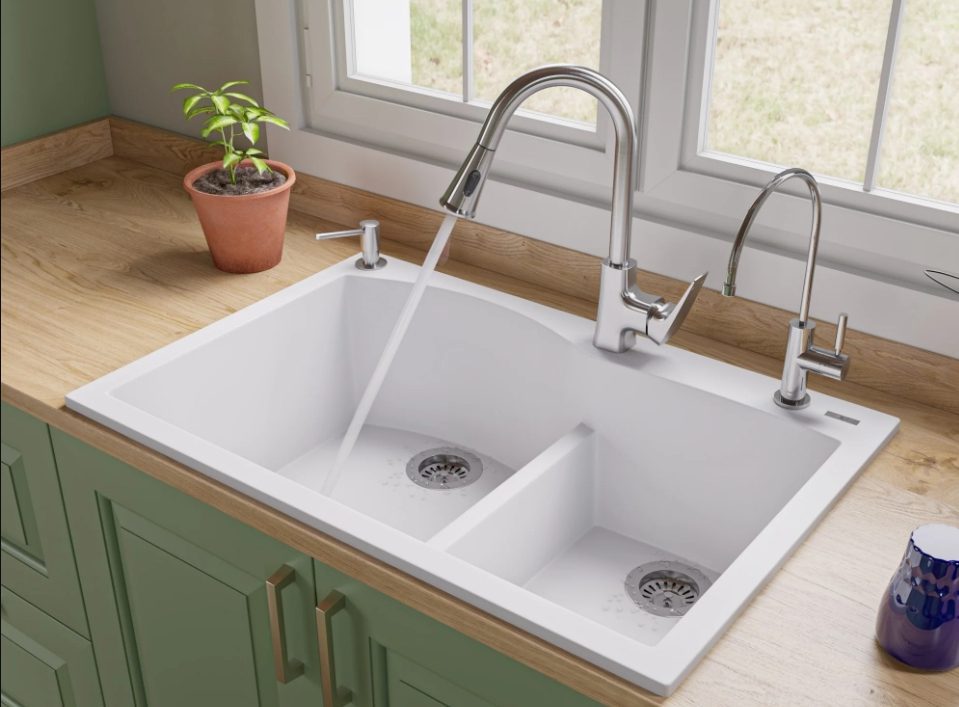
Stainless Steel Sink
When it comes to kitchen sinks, stainless steel stands the test of time as a popular and practical choice. Its combination of durability, affordability, and versatility makes it a favorite among homeowners and design enthusiasts alike.
Pros:
- Variety of styles: From classic drop-in to modern undermount, and from spacious single basin to versatile double basin, caters to diverse kitchen aesthetics and functionalities.
- Durable: Resists wear and tear, scratches, and dents better than some competitors like porcelain or stone.
- Easy to clean: Smooth, non-porous surface requires minimal effort to maintain hygiene and sparkling shine.
- Good value: Mid-range price point offers affordability while maintaining quality compared to luxury sink materials like granite or quartz.
Cons:
- Noisy: The inherent hardness can create clanging and clattering sounds when pots and pans come in contact with the sink surface.
- Prone to scratching and denting: While durable, not invincible; harsh cleaning methods or heavy impacts can leave visible marks.
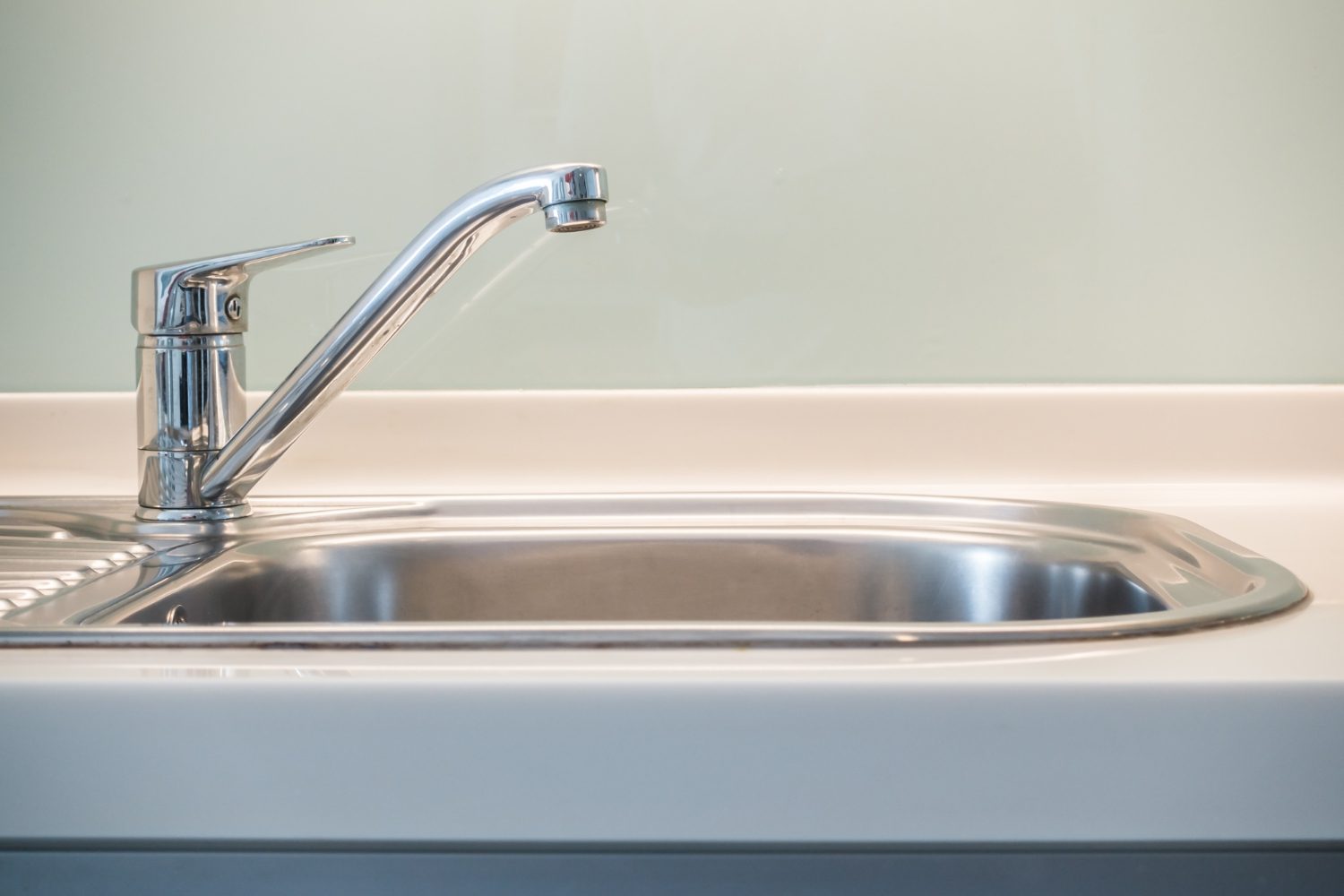
You may also check: 50 Must-have kitchen gadgets (Ultimate list)
Cast Iron Sink
The heart of a cast iron sink lies in its sturdy cast iron core, imbued with an elegant porcelain enamel coating. This coating creates the signature glossy white finish, seamlessly complementing vintage, farmhouse, and country-style kitchens.
Pros:
- Effortless maintenance: Smooth porcelain surface for quick cleaning.
- Heat retention: Warm water even for extended dishwashing sessions.
- Durability: Impervious to cracks, dents, and wear and tear, lasting generations.
- Timeless beauty: Porcelain enamel complements vintage, farmhouse, and traditional kitchens.
Cons:
- Pricey: Higher investment compared to other sink materials.
- Enamel vulnerability: Abrasive cleaners and rough handling can chip or scratch the coating.
- Porcelain staining: Likely to develop a patina over time, requiring regular cleaning for a uniform white surface.
